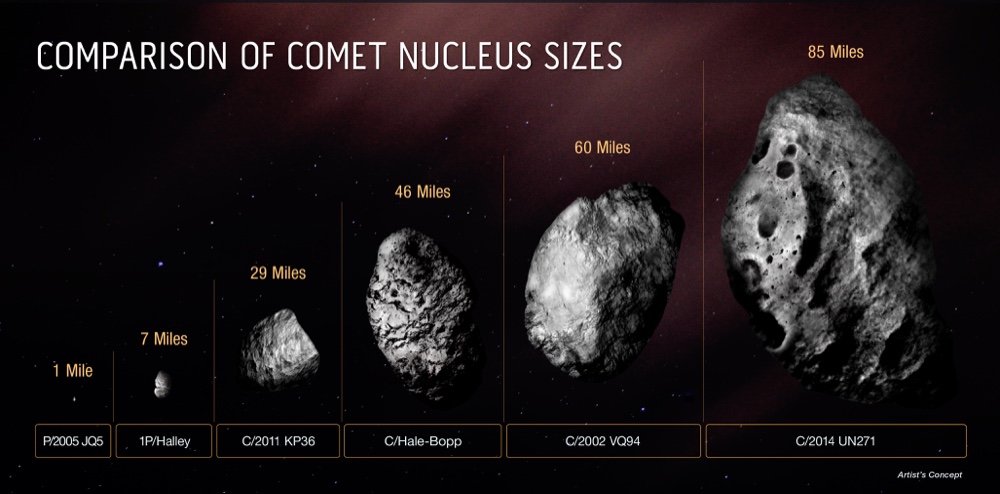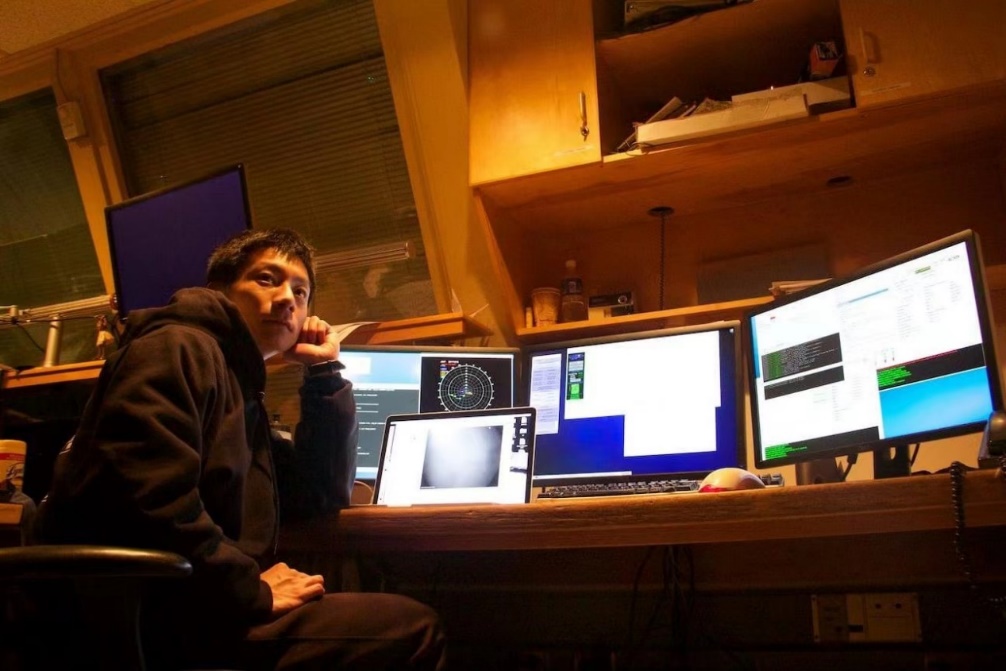A Sino-US research team led by Dr. Wentos Xu, Assistant Professor at the State Key Laboratory of Lunar and Planetary Sciences, Macau University of Science and Technology (MUST), observed C/2014 UN271 (Bernardinelli-Bernstein) through the Hubble Space Telescope (HST) of NASA and ESA on January 8, 2014. Analyzing the Hubble observations, and combining them with the earlier Atacama Large Millimeter and Submillimeter Array radio observations, they confirmed that the comet is the largest comet ever discovered, with a nucleus diameter of ~120-135 km, at least fifty times the size of a normal comet nucleus, and a surface geometric albedo (the ability to reflect sunlight) of ~3-4%, blacker than coal. The collaboration is led by Wen-Tao Hsu, Assistant Professor at the State Key Laboratory of Lunar and Planetary Sciences, in collaboration with Dr. David Jewitt, Professor of Planetary Sciences at the University of California, Los Angeles (UCLA), Dr. Liangliang Yu, Assistant Professor at the State Key Laboratory of Lunar and Planetary Sciences, Macau University of Science and Technology, and Max Mutchler of the Space Telescope Science Institute. The results have been published in The Astrophysical Journal Letters.
Comet C/2014 UN271 was first photographed by two astronomers, Pedro Bernardinelli and Gary Bernstein, by the Dark Energy Survey of the Cerro Tololo Inter-American Observatory in Chile in 2014. The comet was first discovered in 2014 in an image taken by the Cerro Tololo Inter-American Observatory in Chile, at a distance of 29 astronomical units (29 times the mean Earth-sun distance, about 4.4 billion km) from the Sun, just slightly closer than Neptune. The comet was first recorded by chance in November 2010, when its distance to the Sun was more than 5 billion km. Dr. Wentos Hsu pointed out that considering that the comet was so active at such a distance from the Sun, it was suspected that the comet might be very massive, but the best data was needed to confirm it. Dr. Xu's team then used Hubble to take five pictures of the comet on January 8 this year, and successfully measured the brightness of the nucleus, and determined the size and albedo of the nucleus. The giant comet is currently heading toward the planetary region of the solar system at a speed of about 35,000 kilometers per hour, but it poses no threat to Earth because its closest distance to the Sun is more than 1.6 billion kilometers, farther than even the distance from Saturn to the Sun, and it will not occur until 2031.
Link to Astrophysical Journal Letters research release: https://iopscience.iop.org/article/10.3847/2041-8213/ac626a


